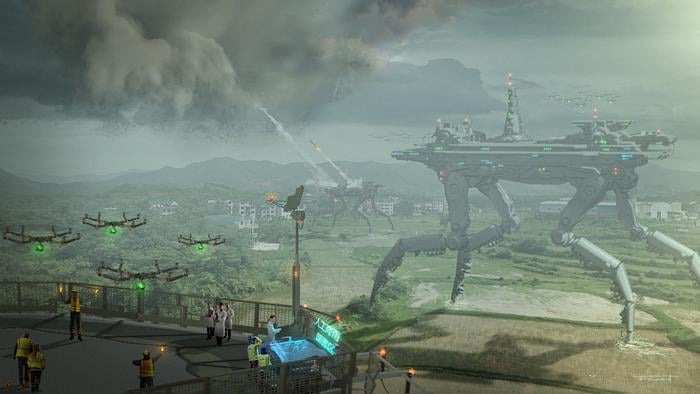Human activities are changing how water moves between the Earth and atmosphere in complex ways that will likely have long-lasting effects that are hard to picture.
Land use changes are altering where clouds form and how rain and snow fall. At the same time, weather modification activities like cloud seeding are shifting how nations plan for water usage with climate change. These and other shifts to the planet’s atmospheric water cycle were once unimaginable but are increasingly part of modern water management on Earth.
Patrick Keys is an assistant professor at Colorado State University who studies climate and societal changes. He has researched these types of issues for years and realized there was a gap in understanding – not just among the public but also water scientists – about the lasting impacts of these changes.
To better grasp how those activities could shape the future, he gathered water scientists from around the world to write story-based scenarios imagining the possible futures humanity may face but can’t quite comprehend yet. The results were recently published in the journal Global Sustainability as a creative way to understand atmospheric water research with an eye towards potential economic and policy issues on the horizon.
The work features striking artist-made images paired with traditional science fiction stories as well as alternative formats like first-person journal entries. Keys said the package offers a grounded-in-science path to build shared understanding of future water management activities and problems.
“Stories are everywhere and are an integral part of human life,” he said. “They tell you something different from a graph in a research paper. They allow you to explore how people may feel or react to these kinds of changes. This kind of work provides agency for people and an opportunity to consider these changes no matter their background or level of understanding.”
The research had three phases, according to Keys. First, he used text analysis to find recurring themes in journal abstracts about the current atmospheric water cycle research state. He then sorted the data – identifying clusters of recurring terms related to economic principles – to better describe how humans and institutions may interact with the atmospheric water cycle in the future, such as how countries could act to protect water resources or leverage advantages to access this crucial natural resource.
It’s those future relationships and interactions with atmospheric water that Keys wanted to explore through science fiction storytelling in the third phase.
“I think we have a sense that some futures are more likely than others, but we need to realize that to adequately cover the possible trajectories our world could head toward, models alone may not cut it,” he said. “Especially when we are talking about things that are hard to quantify, like culture or perception, that may wind up playing a large part in the actual outcomes.”
To create the narratives, Keys hosted workshops with interdisciplinary water experts walking them through ‘futures thinking.’ The diverse experts were not separated by field during the exercise to spur more creativity. In the end, 10 story-based scenarios were developed and included in the paper. Keys also worked with an artist over a year to create the accompanying imagery.
“These scenarios have an ability to raise interesting questions about policy, regulation and enforcement – what those all may look like,” Keys said. “This approach can also help us recognize some of the aspects we may not be paying attention to and make better sense of it all.”
Keys is now using similar approaches for another project with the Colorado Water Center. He said one goal with both projects was to spark conversations around the changing water cycle at a key global moment for action.
The research involved partners from the University of California campuses in Davis and Los Angeles, the Stockholm Resilience Centre, and the Potsdam Institute for Climate Impact Research. It was supported by Keys’ home department of Atmospheric Science in Colorado State’s Walter Scott, Jr. College of Engineering as well as a postdoctoral researcher from CSU’s natural resources department.
If our reporting has informed or inspired you, please consider making a donation. Every contribution, no matter the size, empowers us to continue delivering accurate, engaging, and trustworthy science and medical news. Independent journalism requires time, effort, and resources—your support ensures we can keep uncovering the stories that matter most to you.
Join us in making knowledge accessible and impactful. Thank you for standing with us!

